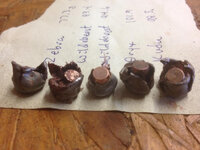Pharmseller
WKR
Please correct my math if you can. If you’re happy shooting 243’s at elk by all means keep using them. If you’re a big fan of frangible bullets use them. I’ve only killed 20 elk & seen another 20 so not a statistically significant sample. 30+ deer isn’t like cull hunters with hundreds or thousands of animals to observe. In my limited experience a big 300 makes a noticeable difference in post shot behavior.
Putting the bullet in the right spot is the most important thing if it’s 85 or 300 grains. Most younger hunters want light rifles that they can’t shoot accurately with heavy recoil. It’s a legitimate choice to go smaller but it doesn’t change the laws of physics.
You are ahead of me on count but not by much, so our experience is basically the same.
I think you are conflating energy with energy transfer. If the bullet zips through the chest cavity without transferring energy there’s really no advantage to a larger cartridge.
For example, I shot a branch bull a few years ago with a 300 Wby Mag using 180 gr Partitions. Maybe 100 yards. Zipzip double lung and exit. The bull just casually turned his head and started walking. Zipzip, shot number two, similar placement. Slowed him down a bit but still standing. Shot number three in the shoulder (hated to do it, destruction) put him down. 300 Wby Mag, 180 gr Partitions.
I have a bunch of stories like this one where the bulls evidently hadn’t read the ballistics tables and simply shrugged off the “energy” of the bullet. Again, actual experience.
A bullet requires sufficient velocity to perform as designed and penetrate vital organs at distances the hunter plans to shoot. Anything more than that just makes a louder sound as it hits the ground on the other side of the animal.
To me, energy figures are worthless. I look at velocity as a function of performance windows and distance and plan accordingly.
But that’s just me. I don’t expect to change your mind and you won’t change mine.
P


